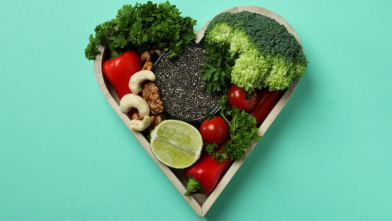Meal planning and cooking when managing diabetes can be easy and you can still enjoy your favorite foods. With a few food substitutions or a change in the cooking method, almost any dish can be diabetes-friendly.
We’ve put together some easy food substitutions for healthier meals you can apply to new recipes or old favorites.
Non-Starchy Veggies
Carbs have the biggest impact on blood glucose (blood sugar). An easy way to cut back on carbs (like pasta, rice, and potatoes) is by swapping them for non-starchy vegetables or vegetable-based alternatives.
There are many great low-carb options at most grocery stores, such as:
- Zucchini or spaghetti squash spirals
- Cauliflower rice
- Cauliflower bread
Lean Protein
Protein is an essential nutrient for your body because along with other benefits, it helps build and repair tissue and muscle. However, high-fat protein sources, like pepperoni and bacon, contain unhealthy saturated and trans fats that can raise your risk for heart disease. Get the benefits of protein from lean sources that contain fewer unhealthy fats. Try to use protein foods such as:
- Lean white meats (like skinless turkey and chicken breasts)
- Pork tenderloin
- Fish
Try to choose red meat less often than white meats and fish. If you are shopping for red meat, look for at least 90% lean varieties such as:
- Round
- Top loin
- Sirloin
- Chuck shoulder
- Arm roasts
Another healthy option is to choose plant-based proteins for your eating plan. Lean plant-based options include:
Low-Fat Dairy
Dairy fits into a healthy eating plan, but it’s important to know that many dairy products have high-fat content. Try to choose low-fat dairy products. Healthy sswaps for full fat dairy products:
- For whole milk and/or half-and-half:
- 1% milk
- Skim milk
- Evaporated skim milk
- Non-fat half-and-half
- For sour cream:
- Low- or non-fat plain or Greek yogurt (it’s nice and tangy)
- L, low- fat buttermilk
- Low-fat cottage cheese
Remember that most dairy products have carbs, so be sure to include them in your daily carb count. And while cheese is a dairy product, it falls into the protein section of our Diabetes Plate. Choose a low-fat variety of cheese as a very low- or no-carb protein source.
Healthy Fats
Solid fats (like butter and coconut oil) are solid at room temperature and liquid fats (like olive and avocado oil) are liquid at room temperature. In most cases solid fats are high in saturated and trans fats, so try not to use them. You can cut back on solid fats by choosing fats such as:
- Vegetable oils
- Margarine, spreads, or blends
- Cooking sprays
This change will usually work in cooking (making chicken, pasta, etc.), but may not work when baking (making cakes, cookies, etc.). Check the label to see if the product will work for what you’re making.
Whole Grains
Carbs are part of the Diabetes Plate and are an important part of healthy eating plans with the right serving size. But some carbs (typically what we consider refined grains, such as white bread) aren’t the best energy source for managing your blood glucose (blood sugar) levels. Try substituting white bread with whole grain sources which have less impact on blood glucose levels. Some delicious and easy swaps include:
- Quinoa
- Almond flour
- Whole wheat flour
- Brown rice
- Other whole grain flour or grain products
Spices
While salt is a part of many recipes and important to our health, it can affect blood pressure. Think of cooking as a great time to experiment with different herbs, spices, and other ways to add flavor without salt! Try using:
- New and/or additional spices
- Herbs
- Mustards
- Lemon juice
- Vinegar
Sweeteners
Low calorie or non-nutritive sweeteners are a great option for sweetening your food and drinks with the least amount of carbs or calories. These have very little impact on your blood glucose. Some alternatives you can find in the store are:
- Stevia
- Monk fruit sweetener
- Sucralose
Sweetening your food with honey, agave, and maple syrup instead of sugar isn’t the best way to replace sugar because they contain carbs and calories and quickly raise your blood glucose.
If using these alternative sweeteners in baking, make sure you’re using the right amount. If a recipe calls for one cup of sugar, you may not always swap it with one cup of an alternative sweetener. Typically, the sweetener’s company will list the amount needed to replace white sugar on its package.
The Bottom Line
Finding healthy substitutions that work in your recipes will make them healthier and easier to fit into your eating plan! After a while, you will get into the swing of things and figure out what works and tastes best for you.














